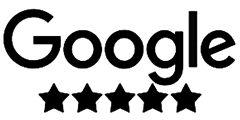Blog
This blog explores the nuances of B2B and B2C, helping you grasp how these models operate and how they shape the commercial world.

December 2, 2024
By
Kamran Awan
Category
Business
In the vast landscape of commerce, businesses operate under two primary models: B2B (Business-to-Business) and B2C (Business-to-Consumer). While both aim to drive sales and generate revenue, they differ significantly in their target audiences, sales processes, and marketing strategies. Understanding these differences is crucial for businesses looking to thrive in their respective markets. This blog explores the nuances of B2B and B2C, helping you grasp how these models operate and how they shape the commercial world.
Understanding B2B (Business-to-Business)
What is B2B?
B2B, or Business-to-Business, refers to transactions between businesses. Instead of targeting individual consumers, B2B companies sell products or services to other businesses. These transactions often involve bulk purchasing, contracts, and tailored solutions.
Examples of B2B industries include manufacturing, technology providers, and professional services. A software company offering enterprise solutions or a supplier of industrial parts exemplifies B2B operations.
How B2B markets operate
B2B markets prioritise long-term partnerships over one-off sales. Decisions in these markets are typically driven by logic, data, and ROI (Return on Investment). Unlike B2C, where purchases can be spontaneous, B2B buyers undergo a detailed evaluation process before making decisions.
The focus is often on building trust, offering technical expertise, and demonstrating value over time.
Examples of successful B2B companies
Some globally recognised B2B companies include Salesforce, IBM, and General Electric. These organisations thrive by offering innovative solutions tailored to the needs of businesses.
Understanding B2C (Business-to-Consumer)
What is B2C?
B2C, or Business-to-Consumer, involves transactions where businesses sell directly to individual consumers. These transactions are usually straightforward, with a focus on appealing to the emotions and desires of the buyer.
Examples of B2C industries include retail, entertainment, and e-commerce platforms like Amazon or Netflix.
How B2C markets operate
B2C markets rely heavily on emotional triggers and convenience. Unlike B2B, where decisions involve multiple stakeholders, B2C purchasing decisions are usually quick and often impulsive.
Marketing in B2C emphasises brand image, affordability, and customer experience to create loyalty among individual buyers.
Examples of successful B2C companies
Household names like Apple, Coca-Cola, and Nike dominate the B2C landscape. Their ability to connect with customers on a personal level has propelled them to global success.
Key differences between B2B and B2C
Target audience
B2B: The audience comprises businesses and organisations. Buyers are typically professionals, such as procurement managers or business owners.
B2C: Individual consumers with diverse tastes and preferences form the audience.
Marketing strategies
Marketing in B2B often revolves around relationship-building, thought leadership, and showcasing expertise. Content marketing, webinars, and whitepapers are common tools. In contrast, B2C marketing thrives on visual appeal, social media campaigns, and influencer endorsements.
Sales processes
The B2B sales process is lengthy and complex, requiring presentations, negotiations, and approvals. On the other hand, B2C sales are faster, with minimal barriers between intent and purchase.
Challenges in B2B and B2C
Challenges in B2B
The B2B landscape is not without its hurdles. One of the biggest challenges is the long sales cycle. Decisions often involve multiple stakeholders, requiring time-consuming meetings, evaluations, and negotiations. Additionally, B2B companies face stiff competition, with businesses constantly vying to prove their superior value and reliability.
Customer retention in B2B can also be a double-edged sword. While long-term partnerships are beneficial, losing a major client can significantly impact revenue. This necessitates constant innovation and maintaining trust.
Challenges in B2C
B2C businesses encounter a different set of challenges. Customer retention is often difficult due to the abundance of choices available to consumers. Building loyalty in a saturated market requires consistent effort in delivering exceptional customer experiences.
Price sensitivity is another significant challenge. Consumers often base their decisions on price, leading to fierce price wars. Moreover, the fast-paced nature of consumer trends demands that B2C companies adapt quickly to remain relevant.
Benefits of understanding both models
Leveraging strengths of both models
Understanding the nuances of both B2B and B2C allows businesses to adopt strategies from both worlds. For instance, B2C companies can learn about relationship-building from B2B, while B2B businesses can benefit from the customer-centric approach of B2C.
Such cross-learning fosters innovation, enabling businesses to optimize their operations, whether it's through improved communication or more effective marketing techniques.
Hybrid models
Some companies successfully operate in both B2B and B2C spaces. For example, Amazon sells products directly to consumers (B2C) and provides cloud computing services to businesses via AWS (B2B). This hybrid model allows businesses to diversify revenue streams and maximise market reach.
Future trends in B2B and B2C
The rise of Digital Marketing
Digital marketing continues to transform both B2B and B2C landscapes. In B2C, personalised email campaigns, influencer collaborations, and social media ads dominate. Meanwhile, B2B marketers are leaning towards account-based marketing (ABM), targeting specific accounts with tailored strategies.
Data analytics and AI are playing a crucial role in identifying trends, optimising campaigns, and understanding customer behavior in real-time.
Technology and automation
Advancements in technology are bridging gaps between B2B and B2C. Chatbots, for example, provide instant customer service in both models. Similarly, CRM software enables B2B companies to nurture leads, while B2C businesses use it to maintain personalised relationships with customers.
Automation tools streamline operations, enhance productivity, and reduce costs, making them indispensable for businesses of all sizes.
Sustainability and social responsibility
As consumers and businesses become more environmentally conscious, sustainability is a key trend shaping both B2B and B2C. Companies that prioritize eco-friendly practices and social responsibility gain a competitive edge.
For instance, B2C brands like Patagonia thrive on sustainability, while B2B firms adopt green practices to meet client expectations and comply with regulations.
Conclusion
B2B and B2C models serve distinct purposes in the world of commerce, each with its own set of challenges and strategies. While B2B focuses on logic, relationships, and long-term value, B2C thrives on emotions, convenience, and quick gratification. Both models are essential to the economy, driving innovation and serving diverse customer needs. By understanding their differences and overlaps, businesses can adopt more informed approaches and excel in their respective markets.
FAQs
Q: What is the primary distinction between B2B and B2C?
A: The primary difference lies in the target audience. B2B caters to businesses and organisations, while B2C targets individual consumers.
Q: Can a company operate as both B2B and B2C?
A: Yes, many companies operate in both models, like Amazon (AWS for B2B and retail for B2C).
Q: Which marketing strategy is more effective for B2B?
A: B2B marketing benefits from relationship-building, content marketing, and demonstrating ROI to clients.
Q: How does consumer behavior differ in B2B and B2C markets?
A: B2B decisions are data-driven and involve multiple stakeholders, while B2C purchases are often impulsive and emotion-driven.
Q: What are future trends influencing B2B and B2C businesses?
A: Key trends include digital marketing, automation, AI, and a focus on sustainability and social responsibility.
To find out more about how you can start your own Digital Agency, please contact a member of our team.
Until next time, take care.
Share this Post






















